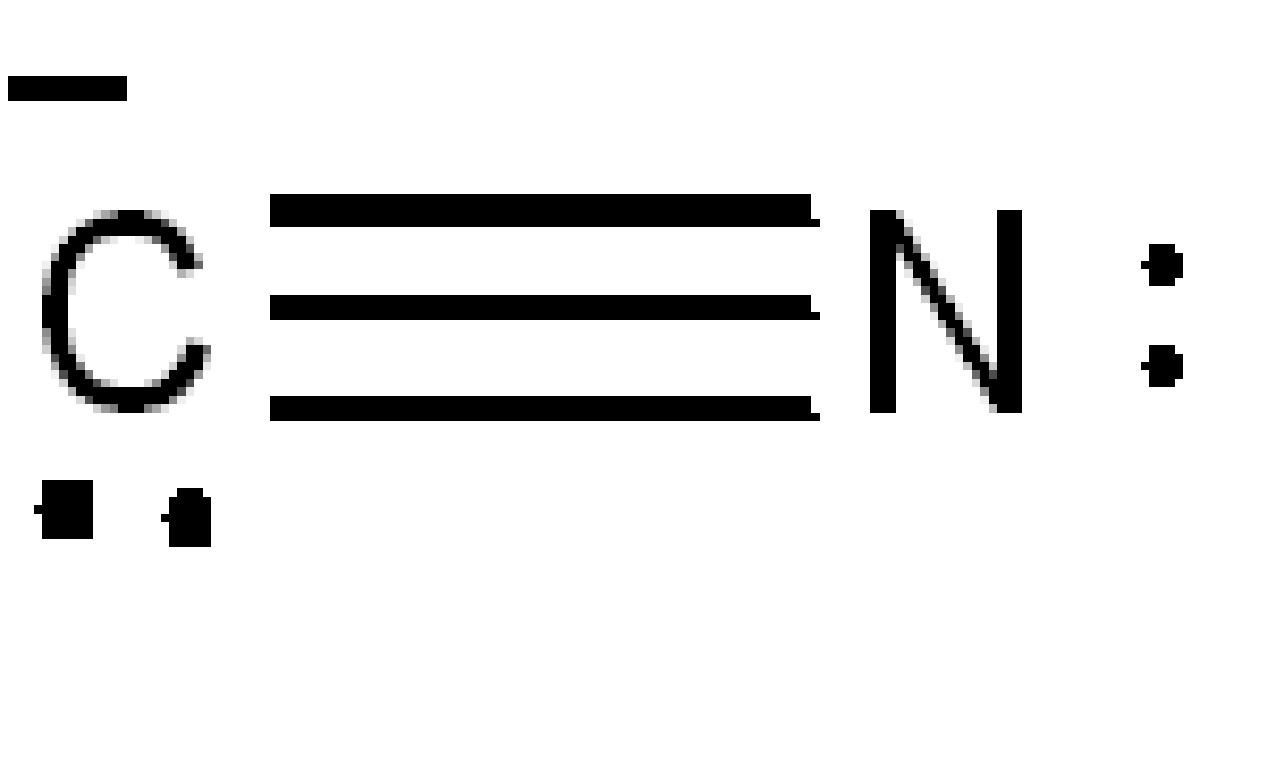
The unshared pair of electrons on a cyanide ion can acts as
A. Isocyanide centre
B. Amido centre
C. Cationic centre
D. Nucleophilic centre
Answer
220.8k+ views
Hint: Cyanide is a functional group possessing the formula of CN. There is a triple bond between carbon and the nitrogen atom. The acidic hydrolysis of cyanide gives carboxylic acid. Cyanide is an ambident nucleophile.
Complete Step by Step Solution:
The structure of the cyanide ion is,

Image: Cyanide ion
Now, let's look at the resonance of the cyanide ion.

Image: Resonance of cyanide ion
As we can see, the cyanide ion has lone pair of electrons. So, it can attract positive charges. Therefore, cyanide ion acts as a ca cationic centre.Hence, option C is right.
Additional information/b>
Let's understand the nucleophilic characteristics of the cyanide ion. From the end of Carbon, the behavior of Cyanide ion (-CN-) as a nucleophile is stronger because it will result in the formation of C-C bond whose stability is more than the C-N bond.

Image: Reaction of an alkyl halide with cyanide ion
Cyanide ion is an ambident nucleophile and reacts either through Carbon or Nitrogen atom. An ambident nucleophile is one in which either can happen through two sites of the same atom. For example, in the cyanide ion, the reaction happens through either C or N atom.
Note: It is to be noted both cyanide and isocyanide are two different functional groups. In cyanide, the reaction happens at the C atom, that is, bond formation takes place like (-CN). In isocyanide, the reaction happens at the N atom, that is, bond formation occurs as (R-NC).
Complete Step by Step Solution:
The structure of the cyanide ion is,

Image: Cyanide ion
Now, let's look at the resonance of the cyanide ion.

Image: Resonance of cyanide ion
As we can see, the cyanide ion has lone pair of electrons. So, it can attract positive charges. Therefore, cyanide ion acts as a ca cationic centre.Hence, option C is right.
Additional information/b>
Let's understand the nucleophilic characteristics of the cyanide ion. From the end of Carbon, the behavior of Cyanide ion (-CN-) as a nucleophile is stronger because it will result in the formation of C-C bond whose stability is more than the C-N bond.

Image: Reaction of an alkyl halide with cyanide ion
Cyanide ion is an ambident nucleophile and reacts either through Carbon or Nitrogen atom. An ambident nucleophile is one in which either can happen through two sites of the same atom. For example, in the cyanide ion, the reaction happens through either C or N atom.
Note: It is to be noted both cyanide and isocyanide are two different functional groups. In cyanide, the reaction happens at the C atom, that is, bond formation takes place like (-CN). In isocyanide, the reaction happens at the N atom, that is, bond formation occurs as (R-NC).
Recently Updated Pages
The hybridization and shape of NH2 ion are a sp2 and class 11 chemistry JEE_Main

What is the pH of 001 M solution of HCl a 1 b 10 c class 11 chemistry JEE_Main

Aromatization of nhexane gives A Benzene B Toluene class 11 chemistry JEE_Main

Show how you will synthesise i 1Phenylethanol from class 11 chemistry JEE_Main

The enolic form of acetone contains a 10sigma bonds class 11 chemistry JEE_Main

Which of the following Compounds does not exhibit tautomerism class 11 chemistry JEE_Main

Trending doubts
JEE Main 2026: Application Form Open, Exam Dates, Syllabus, Eligibility & Question Papers

Derivation of Equation of Trajectory Explained for Students

Hybridisation in Chemistry – Concept, Types & Applications

Understanding the Angle of Deviation in a Prism

How to Convert a Galvanometer into an Ammeter or Voltmeter

Degree of Dissociation: Meaning, Formula, Calculation & Uses

Other Pages
NCERT Solutions For Class 11 Chemistry Chapter 7 Redox Reaction

JEE Advanced Marks vs Ranks 2025: Understanding Category-wise Qualifying Marks and Previous Year Cut-offs

Hydrocarbons Class 11 Chemistry Chapter 9 CBSE Notes - 2025-26

Thermodynamics Class 11 Chemistry Chapter 5 CBSE Notes - 2025-26

NCERT Solutions ForClass 11 Chemistry Chapter Chapter 5 Thermodynamics

Equilibrium Class 11 Chemistry Chapter 6 CBSE Notes - 2025-26




